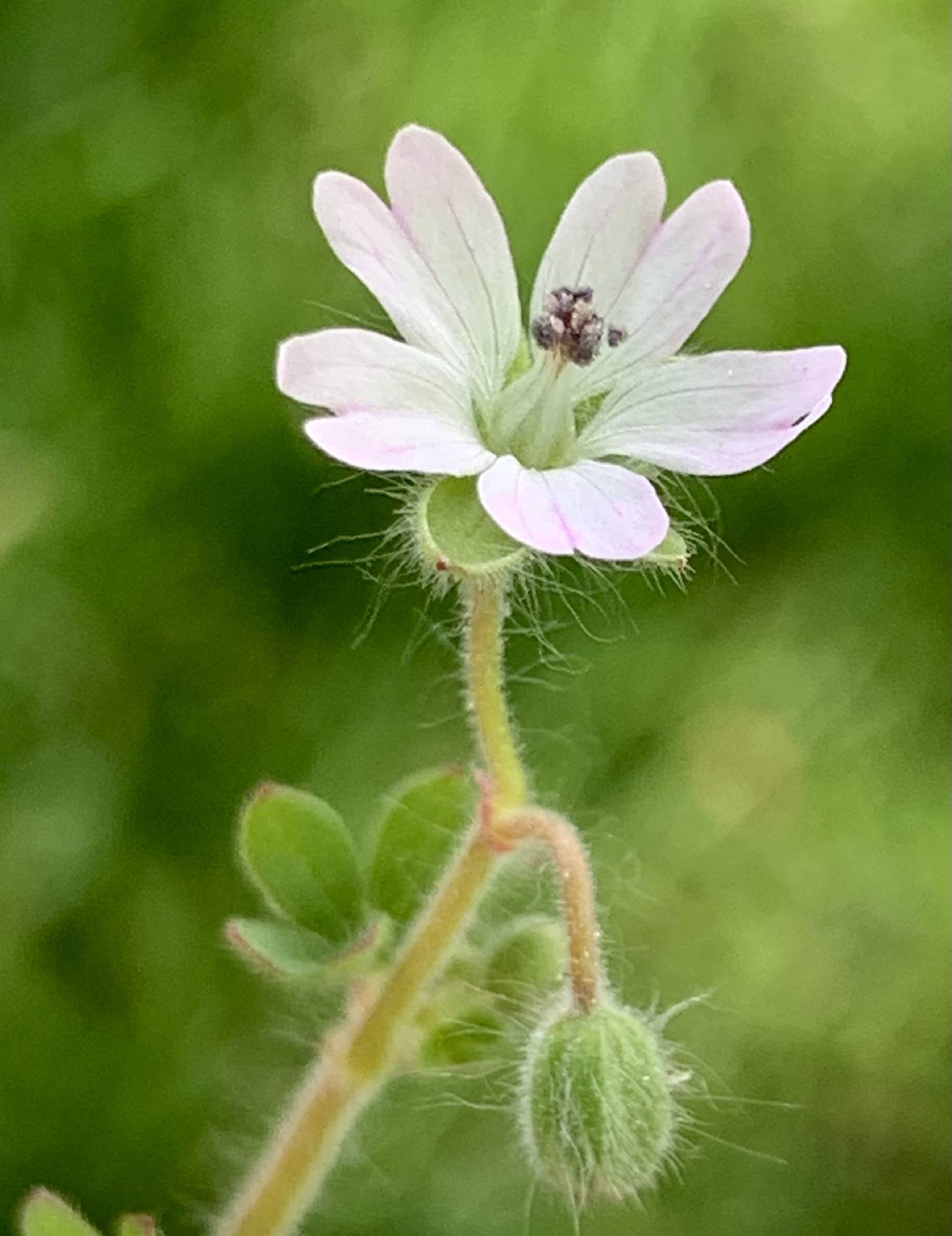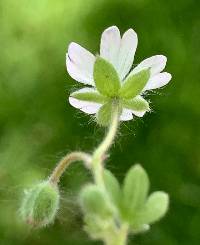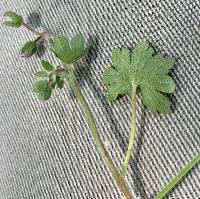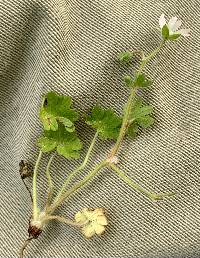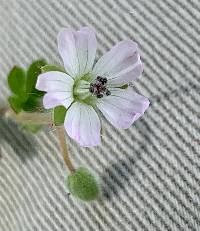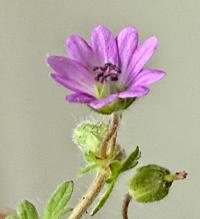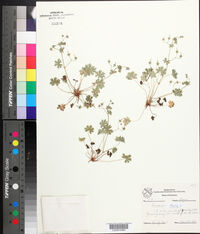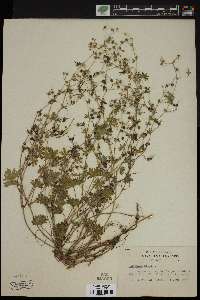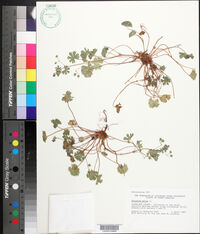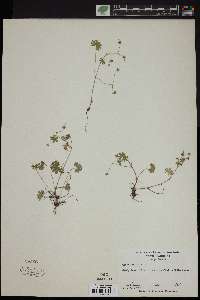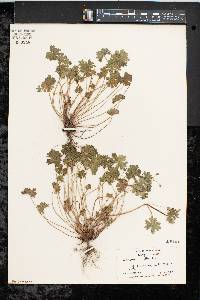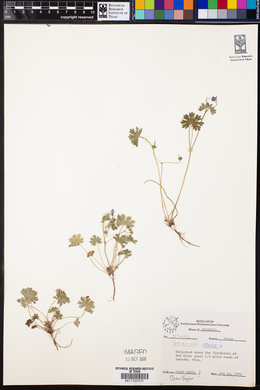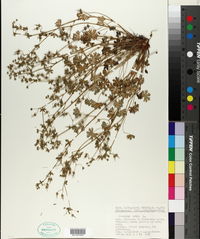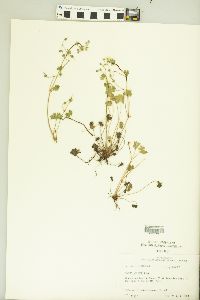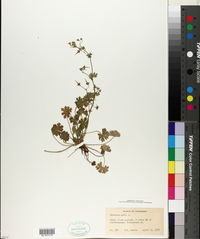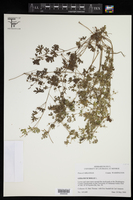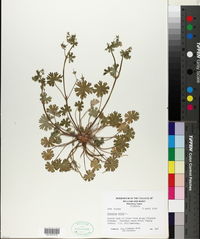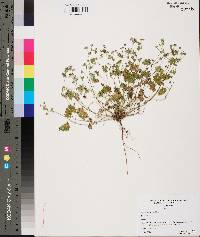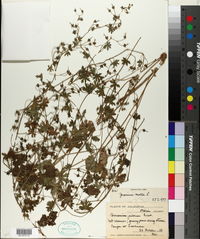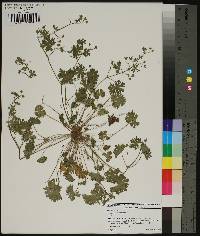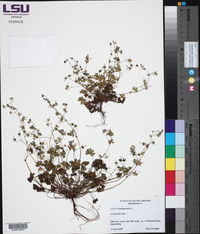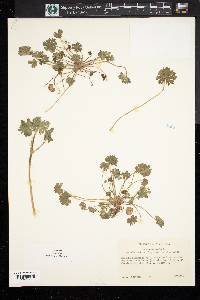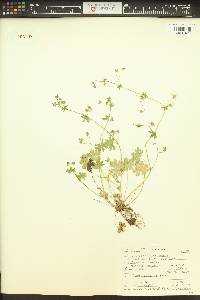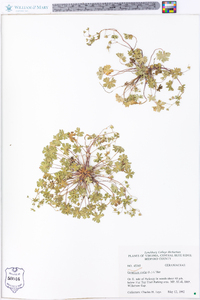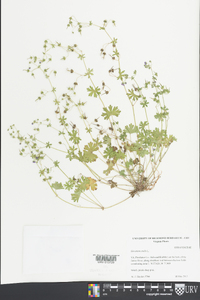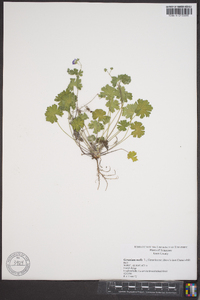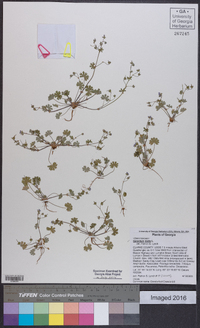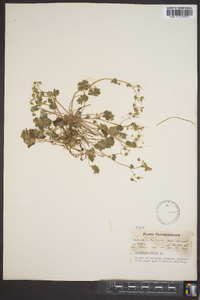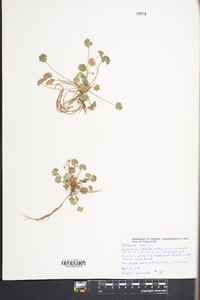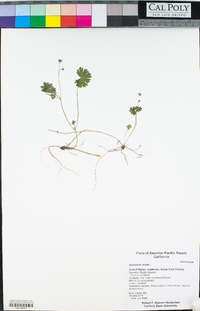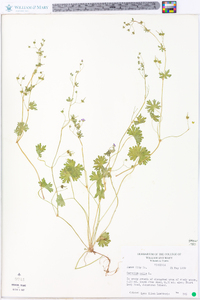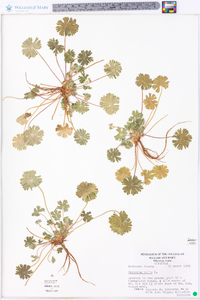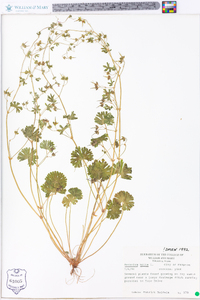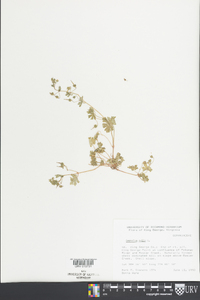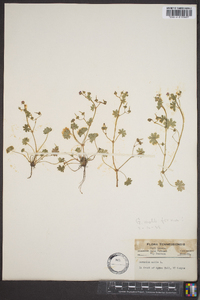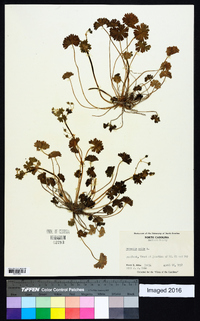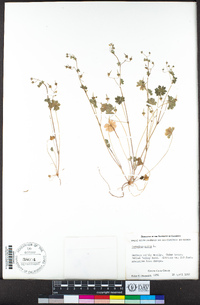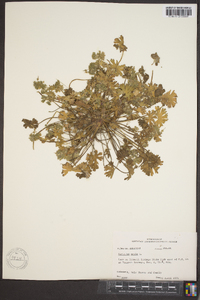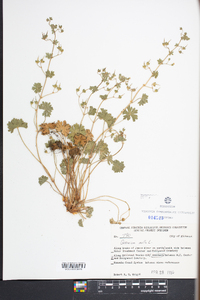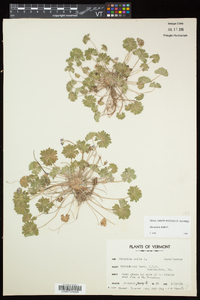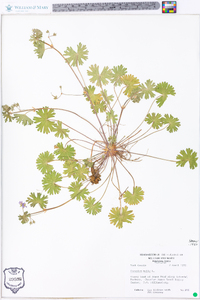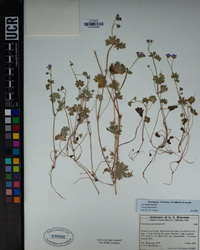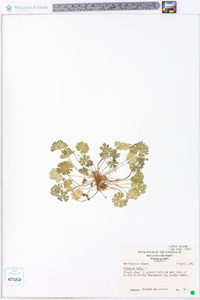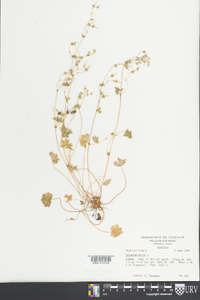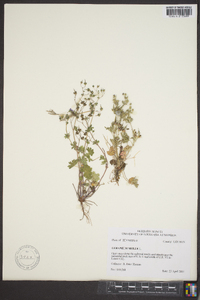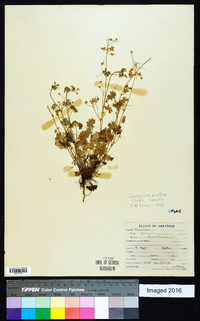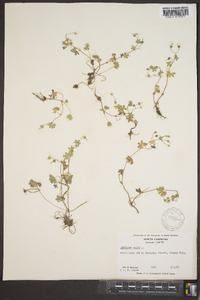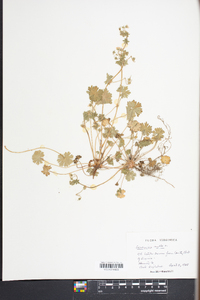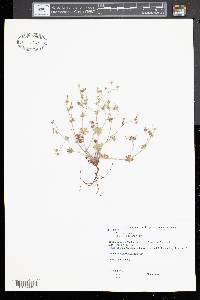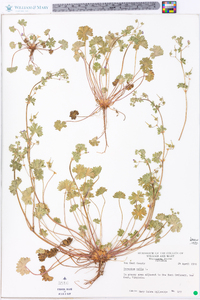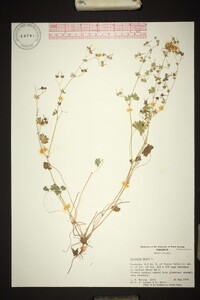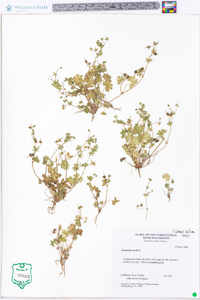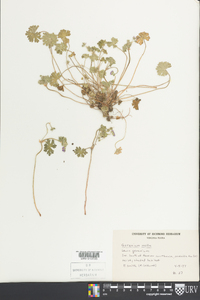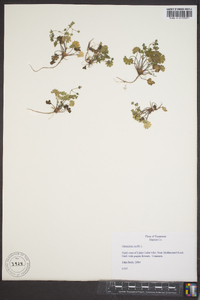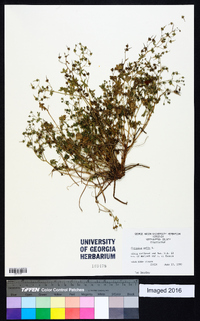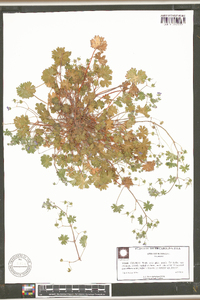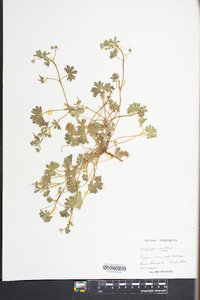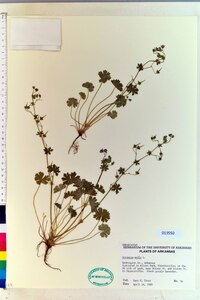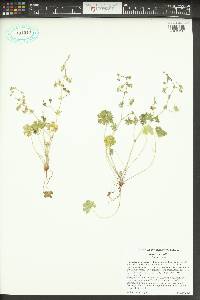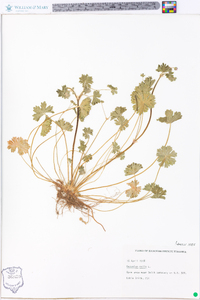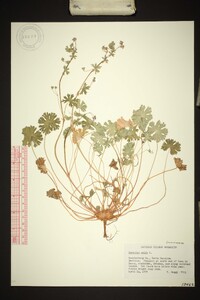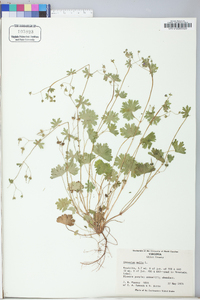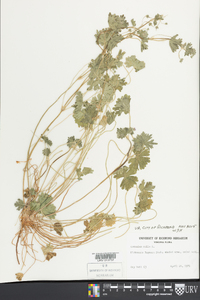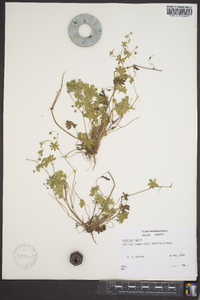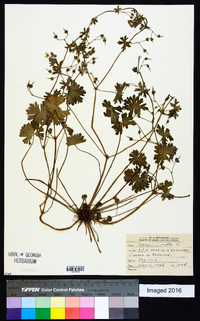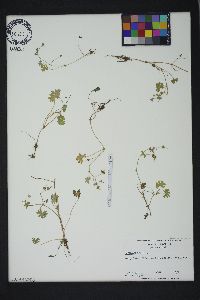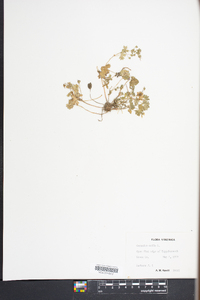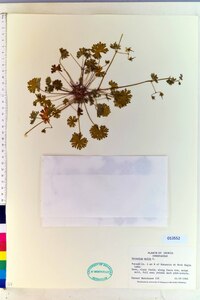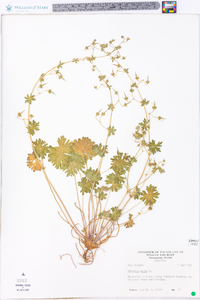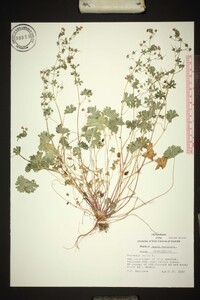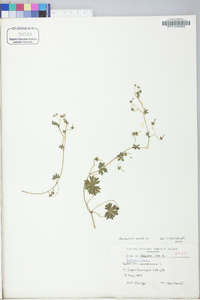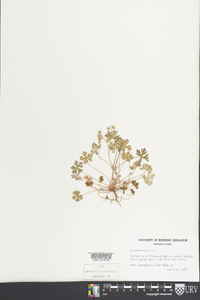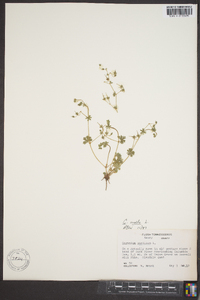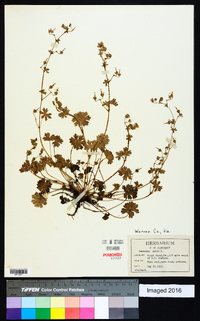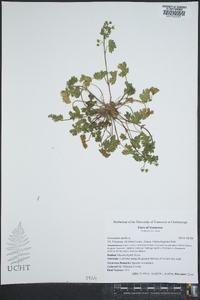Geranium molle
|
|
|
|
Family: Geraniaceae
Dove-Foot Crane's-Bill, more...dovefoot geranium
|
Annual or short-lived perennial herb 10 - 50 cm tall Stem: branched from the base, decumbent to spreading or ascending, grayish-green due to dense covering of hairs, which are a mixture of long, soft, spreading, white, non-glandular hairs and much shorter, glandular hairs. Flowers: numerous, axillary, stalked, pinkish-purple, small (under 1.5 cm wide), radially symmetric. The flower stalks are over twice the length of the sepals, and they are covered with many glandular hairs and intermixed non-glandular hairs. Sepals: five, alternate with petals, green, soft-hairy, 4 - 5 mm long, abruptly pointed at tip, but lacking a terminal bristle. Petals: five, pinkish-purple, 3 - 7 mm long, narrower at base, and deeply notched at center of tip. Next to the base of each petal there is a gland, thus making a ring of five glands alternate the petals. Stamens: ten in two series, all fertile, with filaments widened at base, and up to 1 mm long anthers. The ring of five longer stamens are aligned with the petals, while the five shorter stamens are alternate with the petals. Pistil: with a single, deeply five-lobed, superior ovary; one elongated style column; and five linear stigmas. Fruit: five, erect, hairless, 0.9 - 1.3 cm long, ridged and wrinkled, single-seeded, rounded base, beaked, nutlike segments surrounding remnant elongated style column of each flower. Each nutlike segment has a 2 - 5 mm long, narrowed beak at its tip, which is attached to the lower part of the style column, and then is pulled upwards by the coiling outer wall of the style column, yet stays attached to the entire fruiting structure and ejects the seed from the main body of the nutlike segment. Basal leaves: stalked, 1.5 - 4 cm wide, rounded or kidney-shaped in outline, but deeply five- to seven-lobed with lobes narrowed at base and further three-lobed near the tips. Stem leaves: opposite and stalked in lowest, but uppermost alternate and stalkless, both similar in shape to basal leaves. The lowest leaves of the inflorescence are long-stalked with the blades longer than the flower stalks, but the leaf stalk and blade size decrease up the stem. Similar species: Geranium molle is most similar to another European species, G. pusillum, but that species only has five fertile stamens, the stem only has short hairs, and the fruit is not wrinkled, but covered with appressed hairs. Other species of Geranium in our area either have all opposite leaves, bristle-tipped sepals, or larger flowers. Flowering: April to September Habitat and ecology: Introduced from Europe, only known from Berrien County, Michigan, where it grows in lawns and disturbed areas. Occurence in the Chicago region: non-native Author: The Field Museum Spreading or ascending annual, branched from the base, 2-5 dm; basal lvs rotund or reniform, 2-5 cm wide, 5-9 cleft, the segments usually 3-lobed at the summit; upper
lvs progressively reduced, the uppermost alternate; fls numerous; cal and pedicels densely glandular-puberulent and also hirsute; sep acute, 3-4 mm at anthesis; pet 5-7 mm, deeply notched; fr (including the cal) 9-13 mm, the stylar beak 2-5 mm, the carpel-bodies glabrous but usually with oblique, curved wrinkles; 2n=26. Native of
Europe and w. Asia, now widespread as a weed and found here and there in our range. Apr.-Sept. Gleason, Henry A. & Cronquist, Arthur J. 1991. Manual of vascular plants of northeastern United States and adjacent Canada. lxxv + 910 pp. ©The New York Botanical Garden. All rights reserved. Used by permission. |

